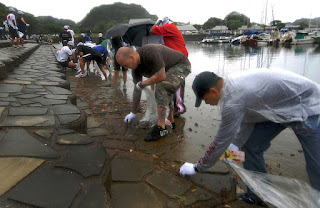 |
| Not this kind of rain |
In Southern California, the vast majority of folks who receive a traffic ticket either pay the fine BEFORE the court date on the ticket [so they don't have to show up], or show up at the first hearing, plead guilty or no contest, pay the fine, and put it behind them. If you really want to do either of those, please do. At least you took care of it.
 |
| I am guilty! |
 |
| This bird is having a bad [hair] day |
 |
| I typed "no contest" into Wikimedia and this was the first image |
 |
| In SoCal, most community service is picking up trash on the freeway or the beach |


























